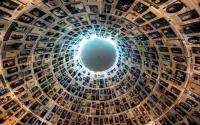Common Dreams / Published on Sunday, August 13, 2006 by the Toronto Sun (Canada) Eric Margolis
For the past month, 3,000 lightly-armed Hezbollah fighters have managed to hold off the Israel Defence Forces (IDF), the world’s fourth most powerful military machine.
This wholly unexpected resistance to a major Israeli operation has amazed the world, electrified Muslim nations and stunned Israelis, who previously dismissed Hezbollah as “a bunch of terrorists.”
According to Israeli media, Israel had apparently been planning the Lebanon invasion for the past three years and conducted a mock invasion of Lebanon only a month ago.
Why have Hezbollah’s mujahedeen proven such fierce and skilled fighters? Many are well-educated university graduates, often around 30 to 40 years old. They are dedicated to driving Israeli troops from Lebanon and aiding the Palestinian cause.
Hezbollah is made up of Shia Muslims with deep traditions of self-sacrifice, fearlessness, and heroism in battle. Some believe death in a righteous battle leads one straight to paradise.
In recent days, the IDF suffered grave casualties in southern Lebanon, notably near the beautiful, strategic hilltop town of Marjayoun, losing 15 dead and 34 wounded. Hezbollah claims to have knocked out 13 Israeli armoured vehicles, including five of Israel’s superbly armoured Merkava tanks. Nearby Bint Jebil, which changed hands numerous times, is being hailed as “Hezbollagrad.”
I was with the Israeli army when it first stormed Marjayoun in 1982. Getting to the town means going up a narrow road carved from a cliff, filled with twists and turns providing perfect ambush sites. We crept up under moderate fire from three directions. It was very frightening and exhausting work. Israeli soldiers have been undergoing the same brutal fighting.
Hezbollah arose to resist Israel’s 18-year occupation of southern Lebanon. Many of its officers are highly skilled and very experienced veterans of the 1980s war. By contrast, IDF ground forces seem to have forgotten almost all the bitter lessons previously learned in Lebanon. The 1980s occupation cost Israel nearly 800 soldiers, the equivalent in the U.S. of 48,000 dead.
Hezbollah is the first Arab fighting force to show real proficiency in small unit combat tactics. Its squads are experts in moving and firing, setting up interlocking fields of fire, ambushes, laying anti-tank mines, and pre-registered mortar fire plans. In fact, this is the first time the IDF has faced really professional soldiers who fight in the western military manner.
Hezbollah’s men wear modern body armour and helmets. They have supplies of munitions cached all over the area, and networks of bunkers, caves and trenches that partially neutralize Israel’s command of the air. Subjected to intensive, round-the-clock bombing by Israel’s air force, Hezbollah fighters have continued to resist with ferocity. No professional western troops could do better.
One of Hezbollah’s few advantages is intimate knowledge of southern Lebanon’s fractured terrain of steep hills, dry stream beds, twisting roads, and deep ravines. Israel’s vast number of tanks and armoured vehicles cannot be employed to full force in such terrain as it was in the deserts of Sinai and barren Golan Heights.
Equally important, Hezbollah’s infantry has acquired sizeable amounts of anti-tank systems. These weapons, some sourced from Iran or Syria, have caused the largest number of Israeli casualties.
Had Hezbollah any effective shoulder-fired anti-aircraft weapons, Israel’s enormous advantage from devastating close air support would be partially neutralized.
Far from being what Israel and the U.S. call a “terrorist group,” Hezbollah is an integrated political, social, cultural and military movement that represents Lebanon’s Shia, who make up 40% of that nation’s people.
87% support Hezbollah
Recent polls show 87% of Lebanese, including many Christians, Druze, Armenians, Orthodox, and Sunnis now support Hezbollah.
Hezbollah has become an overnight hero among Sunnis, who formerly regarded Shias as vile heretics.
Meanwhile, Israel has acknowledged its military failure to date by shoving aside its Northern Command commander, Maj.-Gen. Udi Adam. He insists his hands were tied by politicians.
A ceasefire agreement was reached late Friday by the UN Security Council. If it does not come into effect, some 40,000 more Israeli troops are poised to enter southern Lebanon. The most likely ground scenario is a westward thrust from the Galilee Panhandle along the Litani River, thus isolating southern Lebanon. But Hezbollah’s leader, Sheik Hassan Nasrallah, has vowed to fight for every village and hill; however, his men are running low on munitions and taking serious, though not crippling, losses.
Bombing will not destroy Hezbollah. The encouragement of this foolish strategy by U.S. President George W. Bush marks his third military disaster. Israel risks getting permanently stuck in Lebanon through mission creep. Hezbollah cannot be uprooted without wiping out Lebanon’s 1.5 million Shias.
But Israel’s political leaders cannot stop the war without a clear military victory. Anything less will be called a major defeat and bring political oblivion. All Hezbollah has to do to win is survive the Israeli onslaught.
Even the assassination of Nasrallah will not eliminate Hezbollah. Israel’s best way out of this mess is through the current U.S.-French ceasefire proposals. Meanwhile, Hezbollah is being hailed as the new hero of the Muslim world, a turbaned David battling the U.S./Israeli Goliath.






